The latest flamethrower tanks of the Soviet Union
"481 Object" - FROM-54
Attempts to equip the medium tank T-54 with a flamethrower began in 1946 year. Initially it was supposed to use the ATO-42 automatic flamethrower, created for the tanks that were in service. Considered two options for placing this weapons: in the tower or in the case. The first option provided greater efficiency of use, but at the same time complicated the layout of the fighting compartment, and the second was simpler, but did not allow to quickly carry the fire. As a result of analyzes and comparisons, it was decided to install a flamethrower in the turret of the tank. In addition, the customer in the person of the Ministry of Defense wanted to get a new flamethrower.
In the middle of 1948, a special design bureau SKB-75 was established at the Kharkov plant No. 1, whose tasks included the creation of promising projects, including flame-throwing tanks. Further work in this direction was carried out by Kharkov designers with the active participation of related enterprises. As early as February 1951, two prototypes of the 481 Object flamethrower tank were presented for testing. Tests have shown that further refinement of the project is required.
During the revision, the new flamethrower tank retained the main features of the first version of the project, which eventually reached mass production. However, he had a number of differences, primarily related to weapons and related systems. When converting the medium tank T-54 into a flamethrower variant, the design of the combat vehicle underwent minimal changes, affecting only the layout of the internal volumes. So, in place of the front unit pack on the 20 projectiles and an additional fuel tank, a 460-liter fire tank, a thermal sensor, and several fire-fighting equipment were placed. It was supposed to pour in and drain the flammable liquid through the necks covered with small hatches in the roof and the bottom of the hull.
In all variants of the “Object 481” project, an automatic powder gun was placed in the turret, next to the gun. Because of this, the tank lost SGMT machine gun coupled with a gun. Flame-throwers of ATO-42 and ATO-49 models were used on prototypes of a promising tank. In addition, different prototypes of a flamethrower tank were equipped with ignition systems of various types.
The first prototype of the tank “Object 481”, which was released for testing in 1951, carried the ATO-42 flamethrower paired with a gun. Dimensions of the flamethrower required to modify the tower, welded on its frontal part of the tubular casing, which defended the protruding parts of the flamethrower. Tests of the first prototype of a promising machine showed its ambiguous characteristics. Due to the installation of the fire tank, the ammunition load for the gun was reduced to 24 shells. In addition, a flamethrower was installed instead of a machine gun paired with a cannon, which accordingly affected the capabilities of the combat vehicle in operations against infantry. The firefighting reserve was enough for 28-30 shots, and the maximum range of throwing flammable liquids did not exceed 100-110 meters. These characteristics generally suited the customer, but in the early fifties, the military wanted a flamethrower of a new model.
The second prototype was equipped with a new ATO-49 automatic flamethrower with an electric gasoline ignition system. The overall layout of the internal units of the hull and the tower of the second prototype corresponded to the layout of the first prototype. In this case, the gun ammunition dropped to 19 shells, and a flamethrower - to 20 shots. During the test, a gasoline ignition system caused a claim, which did not provide the required reliability of operation. In connection with this flamethrower ATO-49 soon received a new ignition system.
By 1953, the finalization of the first version of the 481 Object project was completed, the result of which was the construction of five prototypes at once, armed with ATO-49 flamethrowers with a pyrotechnic ignition system. The new flamethrower consisted of several main parts: the tank, breech, valve, nozzle, air system and ignition system. Before the shot, the electric control system supplied two 10-liter compressed air cylinders to the 20 tank with liters of AP-7 fire mixture (a mixture of gasoline and kerosene with the addition of xylenol and OP-2 thickener). At the same time, powder and pyrotechnic cartridges were supplied to the corresponding chambers. When you press the shutter release button, the pyrotechnic cartridge first ignited. A jet of fire was displayed in front of the flamethrower nozzle. After 0,1-0,2 seconds after that, the powder cartridge and the resulting gases ignited, pushing the piston, squeezing the valve and throwing the fire mixture through the nozzle. After the shot, the tank and the nozzle were blown with compressed air.
The system with pyrotechnic ignition, not greatly complicating the design of the automatic flamethrower, ensured sufficient reliability of its operation. The 460-liter fire tank was enough for 20 shots. The same number of pyrotechnic and powder cartridges were placed in the flamethrower stores. On tests, the third prototype of the 481 Object tank was able to reach the maximum range of throwing the mixture around 160 meters. The practical rate of fire did not exceed 7 shots per minute, although, if necessary, the crew could shoot at a high rate, which, however, led to the rapid consumption of an already small amount of fire mixture.
Keeping the capacity of the fire tank at the level of 460 liters did not allow us to leave a large ammunition ammunition. So, on the third prototype and the subsequent experimental machines in the packs only 19 shells for the gun were placed. In the box machine gun fit 1500 cartridges. The design of the armored hull and turret has undergone minor changes associated with the installation of new equipment. At the same time, the electrical system of the base T-54 tank had to be modified due to the use of electrical flamethrower units, as well as additional carbon dioxide cylinders and another nozzle were added to the fire fighting equipment. The crew of the flamethrower tank corresponded to the crew of the base machine and consisted of four people. For shooting from the flamethrower, an additional telescopic sight TS-19 was installed, which was used in the very first version of the project “Object 481”. The equipment of the tank made it possible to conduct aimed fire from a flamethrower only from the spot.
In the last months of 1953, Kharkov designers presented five new flame-throwing tanks for testing. Improvements in the base T-54 medium tank did not have a significant impact on the mobility of the flamethrower machine. At the same time, the new development demonstrated high firing characteristics that interested the military. In 1954, the flamethrower tank “Object 481” received the official name OT-54 and was adopted. Some sources mention the alternative designation of the T-54-ATO tank. ATO-49 flamethrower also received a new index - ATO-1. Serial construction of new flamethrower tanks was carried out at the Kharkov plant No. XXUMX, and also at the factory No. XXUMX (Chelyabinsk). In just a few years, two companies built the entire 75 flamethrower tanks. Such a small number was due to the specific tactical role of armored vehicles of this class.
"482 Object" - TO-55
After adopting the OT-54 tank, employees of the Kharkov SKB-1 continued the development of tank flamethrowers. Already in 1955, a preliminary draft of a new system, capable of throwing flammable liquid to a distance of 200 meters, appeared. The firing range was fixed in the name of the project - ATO-200. In 1956, tests of the first prototype of a new weapon began, and two years later a prototype of a new flamethrower tank armed with an ATO-200 was assembled.
When designing a new flamethrower tank "Object 482" used the same approach as in the previous project. The T-55 medium tank was taken as the basis for the combat vehicle (some sources mention that the vehicle was based on the T-54 vehicle), with an automatic flamethrower installed with minimal modifications to the design. Flamethrower placed in the tower, on the site of a coaxial machine gun. An interesting feature of the new version of the flamethrower tank was the two-plane weapon stabilizer, which provided shooting in motion both from a cannon and from a flamethrower. Parts of the ATO-200 flamethrower, bred beyond the tower, were covered with a cylindrical casing. The tank for fire mixture with a capacity of 460 liters remained in its place - next to the control compartment.
The new flamethrower ATO-200 was a further development of ATO-1, but at the same time it had a number of differences. The first thing to note is the use of a larger tank - the volume of one shot increased to 35 liters. The principle of the flamethrower mechanisms remains the same. The preservation of the capacity of the fire tank has affected the number of possible shots. ATO-200 flamethrower on one refueling with a flammable liquid and with one set of cartridges could only make 12 shots. The quantitative deficiencies of the ammunition were compensated for by qualitative ones, namely, by a large volume of ejected flammable liquid and a greater range of its throwing. The maximum firing range was adjusted to the required 200 meters.
In addition to a larger tank, the flamethrower ATO-200 received a new electrical system based on a relay that made it truly automatic. The gunner or tank commander now needed only to point the weapon at the target and press the shutter button. All necessary operations were performed automatically. A characteristic feature of the ATO-200 flamethrower was the possibility of firing in bursts. The electrical control system of the flamethrower allowed the crew of the tank to fire several shots in a row while holding the shutter button. In the case of the ATO-1 flamethrower, this required a series of clicks. The ATO-200 automatics independently determined which mode the crew was about to shoot and worked accordingly. The maximum rate of fire of the flamethrower was equal to 8 per minute shots.
The combat weight and main characteristics of the tank "Object 482" remained at the level of the base T-55. However, the barrel weapons ammunition, as in the case of the OT-54, was reduced. In the modified styling placed 25 shells for guns and 750 ammunition for the course machine gun.
The testing of the 482 Flamethrower Tank began in the 1958 year. New flamethrower by this time was refined and tested separately, which had a positive impact on the project. In January 1960, the 482 Object was adopted under the name TO-55, but mass production began later. The first batch of 10 serial machines was assembled only in 1961 year. At this time, the military began to doubt the feasibility of the development and construction of flamethrower tanks. In the armies of potential opponents, hand-held anti-tank grenade launchers became widespread, and the first missile systems designed to destroy armored vehicles appeared. All these anti-tank weapons had an effective firing range that was not inferior or even exceeded the capabilities of the ATO-200 flamethrower. The lack of a machine gun paired with a gun was also a subject of controversy, since it could significantly reduce the effectiveness of the tank in the fight against infantry. Because of this, TO-55 tanks were built in small batches. In total, 830 of such machines was assembled.
"483 Object"
After the design work on the “482 Object” project was completed, SKB-1 engineers engaged in a new flamethrower tank project based on T-54 / 55. This time it was planned to increase the combat capabilities of the flamethrower to a level limited only by the characteristics of the fire mixtures available. Calculations showed that the properties of combustible liquids of the brands BBU and SKS-15 allow you to make volleys up to 100 liters and shoot at a distance of at least 200-250 meters. These numbers looked promising, leading to the start of the 483 Object project.
As a basis for a promising flamethrower tank, the T-54B model combat vehicle was taken. However, unlike previous projects, the flamethrower was supposed to be not the additional weapon of the tank, but the main one. It was proposed to install it instead of 100-mm guns. New flamethrower OM-250 mounted on the modified gun trunnions. Outside the tower, the flamethrower nozzle was closed with a tubular casing. The tank for fire mixture with a capacity of 1600 liters was placed in the fighting compartment, to the right of the flamethrower. It was mounted on shock absorbers and turned with the tower. The filling neck of the tank was under the right hatch on the roof of the tower. To ensure optimal temperature conditions of the flamethrower in the aft part of the tower, a hole was made in which the fan was placed.
Due to the lack of free space in the turret, borrowed from the T-54B tank without major changes to the design, the flamethrower combat vehicle lost the coaxial machine gun. The embrasure of the machine gun was absent, and the embrasure of the sight was reduced in accordance with the capabilities of the flamethrower. Nevertheless, the new flamethrower tank "Object 483" carried a SGMT exchange gun, located in the front hull plate. The absence of a gun made it possible to exclude the loader from the crew. The flamethrower should have been controlled by the gunner and, if necessary, the tank commander.
The OM-250 flamethrower design was a further development of the ATO-200, adjusted for a larger volume of the missile mixture. One refill of the fire tank was enough for 14 shots. The same number of cartridges with a pyrotechnic and propelling charge was placed in the drum shops of the flamethrower. Automatic flamethrower, using the already tested and mastered way of working, allowed to do up to five rounds per minute, both single and in turns. In the project of the OM-250 flamethrower, technical solutions created during the development of the ATO-1 and ATO-200 were used. Because of this, the design of the flamethrower did not allow the use of relatively powerful powder cartridges. The maximum speed of throwing fire mixture, due to limitations in strength, was limited to 100 meters per second. In this regard, the maximum firing range did not exceed 250-270 meters.
The development of the 483 Object project took several months. Already at the end of 1959, Plant No. 75 began the construction of the first prototype. Only in 1961, the prototype was transported to the NIIBT test site, after which its tests began. In terms of its firing characteristics, the new OM-250 flamethrower surpassed all the weapons of its class that existed at that time, but it was not without claims. As in the case of the “482 Object” / TO-55, some doubts were caused by the effectiveness of the use of a flamethrower against manpower and unprotected enemy equipment in the light of the widespread use of infantry anti-tank weapons. In addition, again the absence of a machine gun paired with the main weapon, due to which the new tank could hit targets at a distance of no more than 250-270 meters, was negatively manifested. Finally, the OM-250 flamethrower took the place of the gun, which is why the “483 Object”, having a long range of throwing fire mixture, lost its predecessors in the total fire power of all weapons. The Ministry of Defense considered that the adoption of a new tank is inappropriate. In 1962, the 483 Object project was discontinued. The only prototype built is now stored in a museum of armored vehicles in Kubinka, near Moscow.
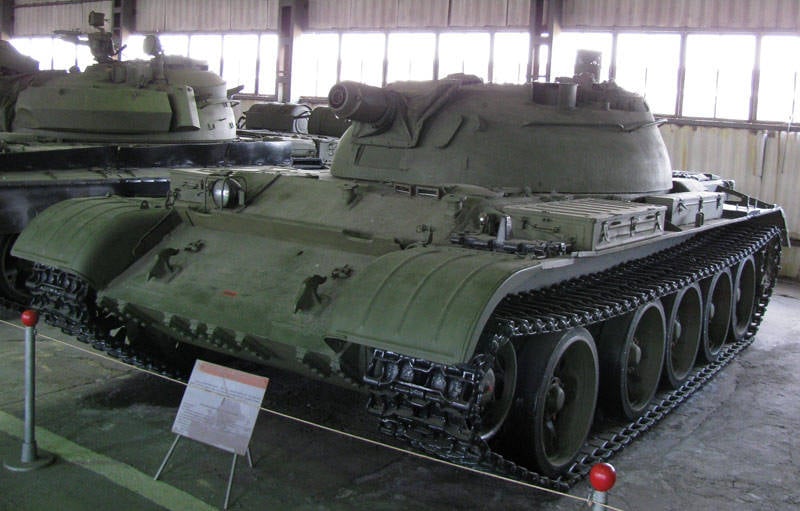
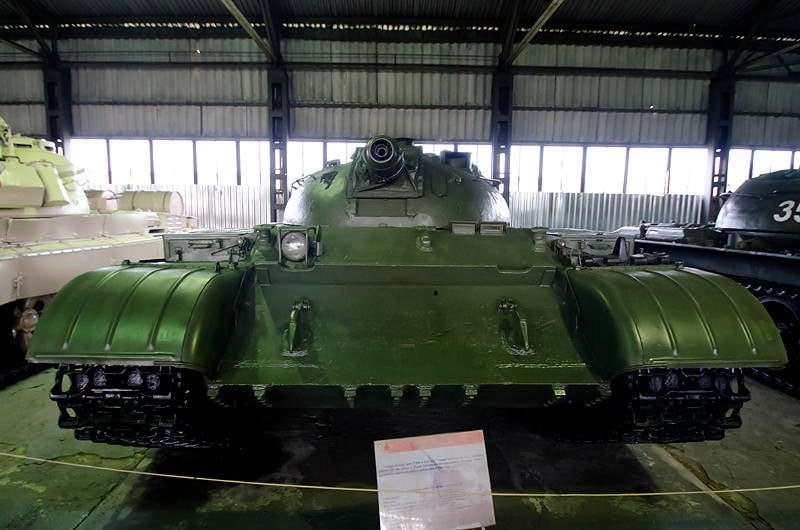
Last in class
The 483 facility was the latest domestic flamethrower tank. The set of characteristics of the machines of this class did not allow effectively hitting targets on the battlefield of the supposed full-scale war. In addition, the use of a large fire tank appropriately affected the survivability of the tank. Finally, the emergence of new weapons for infantry significantly increased the risks when attacking enemy personnel. As a result, the OT-54 and TO-55 flamethrower tanks were built in a relatively small number: less than one thousand cars of two models.
The specific tactical role of flamethrowing tanks did not fit well with the intended nature of future armed conflicts. In this regard, this technique has not received much distribution. Moreover, already in the early sixties, all work in this direction was stopped. The unpromising flamethrower tank "Object 483", which was preceded by those built serially OT-54 and TO-55, became the last domestic armored car of its class.
On the materials of the sites:
http://dogswar.ru/
http://armor.kiev.ua/
http://vadimvswar.narod.ru/
http://pro-tank.ru/
http://tankinfo.ru/
Ardashev A.N. Flame-incendiary weapons. - M .: Astrel / AST, 2001
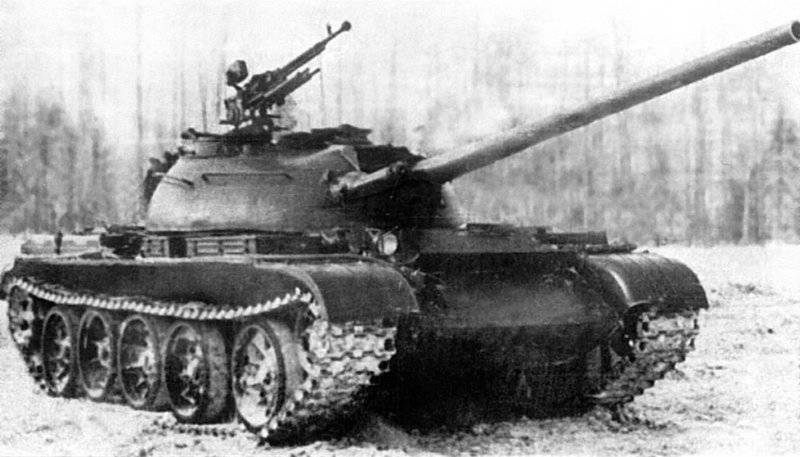
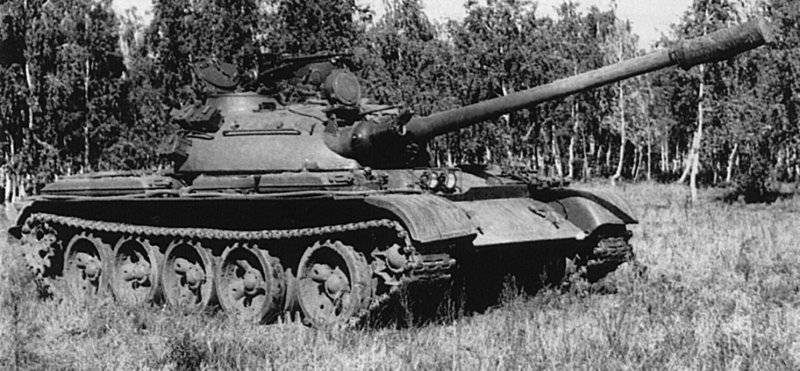
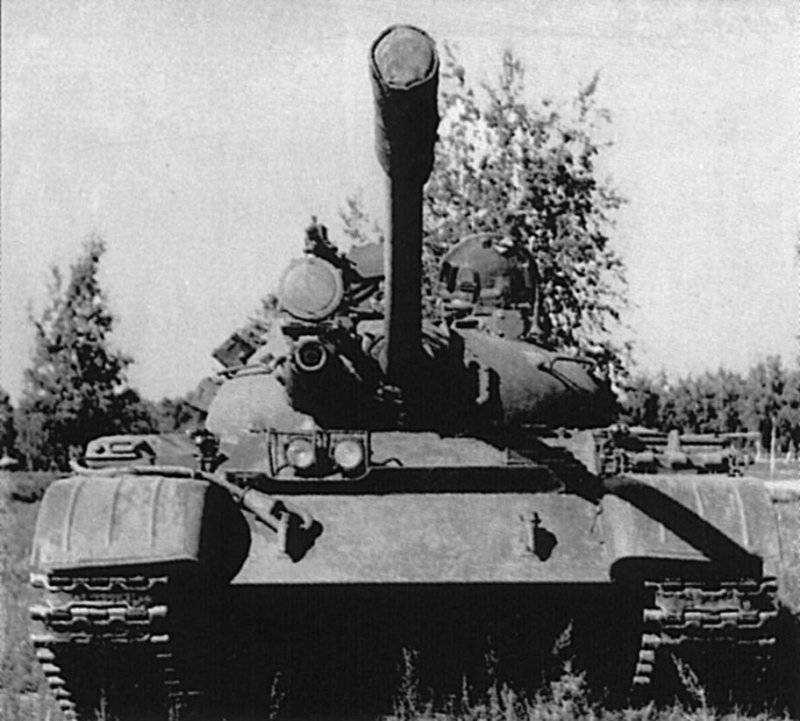
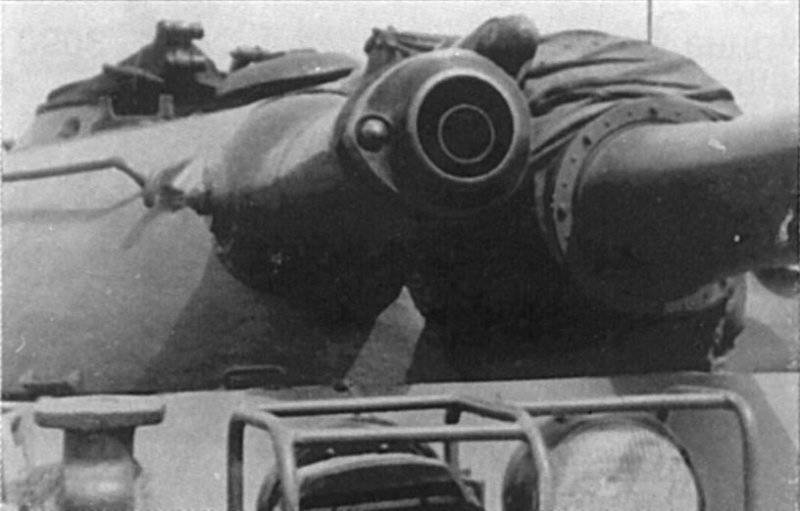
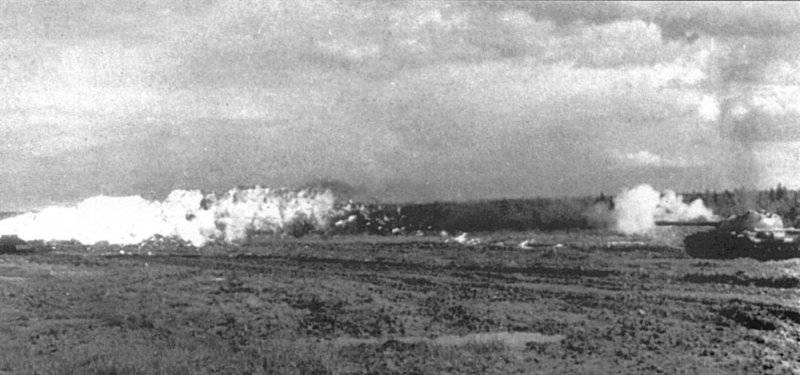
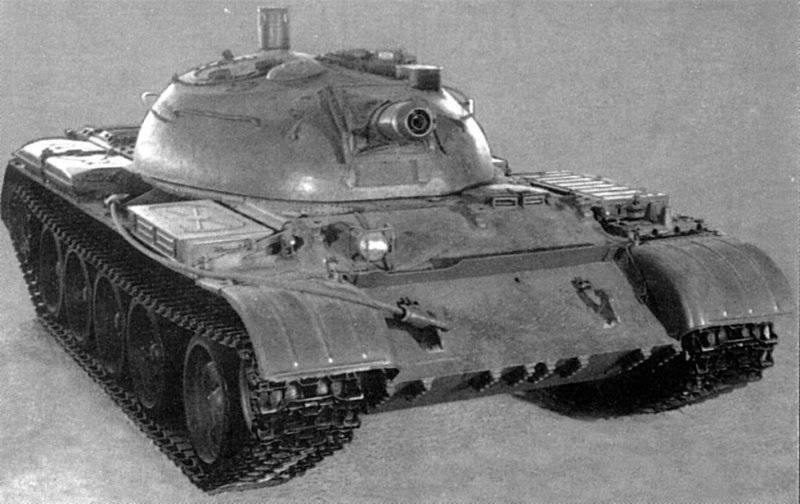
Information